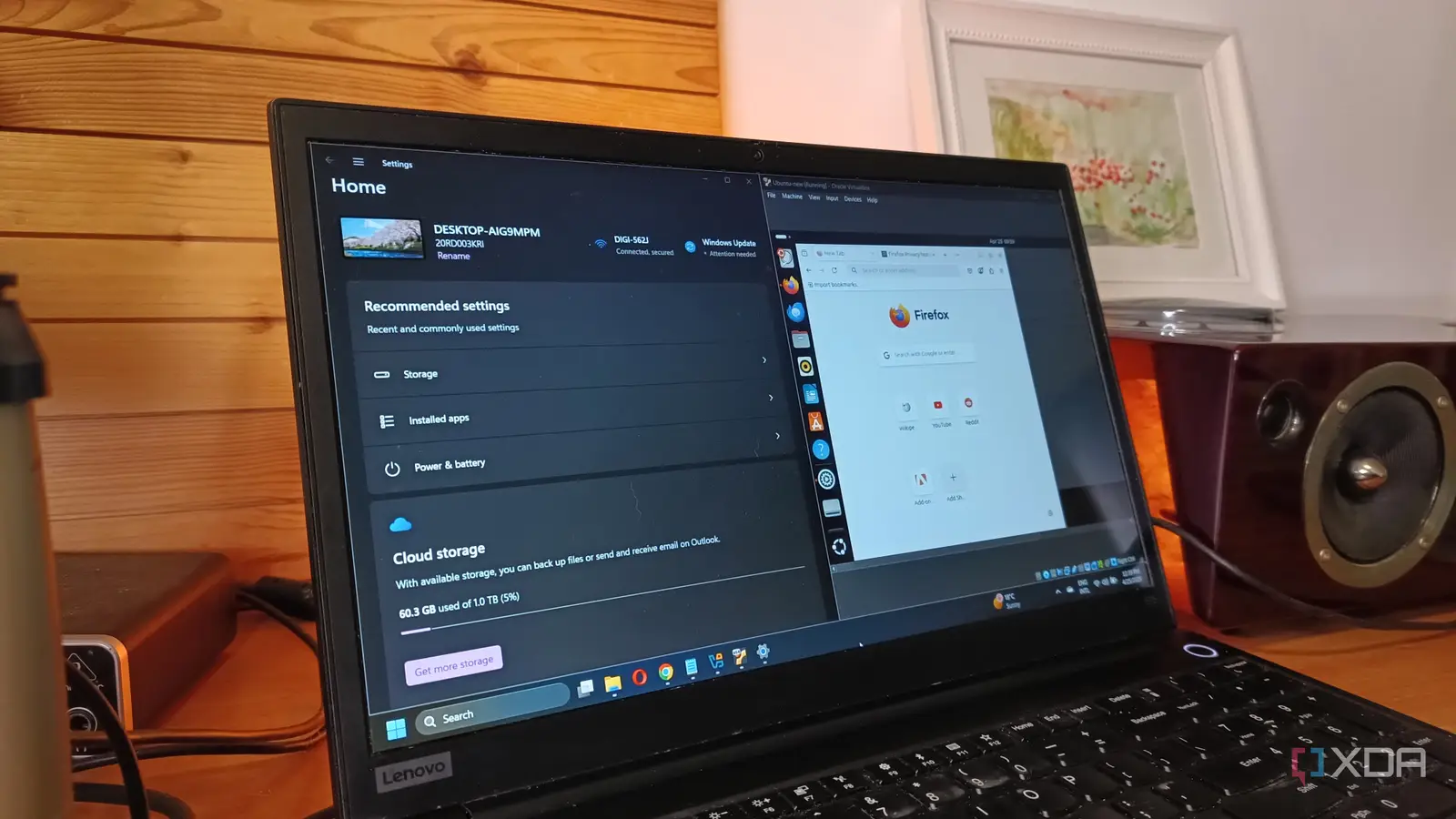
Windows 10’s impending retirement has users in a state of uncertainty. The obvious alternatives are mainstream Linux distributions, such as Ubuntu, that don’t impose difficult system requirements like those of Windows 11. Unsurprisingly, users like me will switch to Ubuntu because of its popularity and open-source nature, which doesn’t require a one-time purchase or subscription. However, using it as a daily driver on one of the laptops made me realize that it lacks several native features that I expect an operating system to have.
Whether you transition from Windows 10 or 11, you’ll surely miss these features/tools in Ubuntu. Ubuntu tends to skip system restore, lacks native OCR features in screenshot and image viewing tools, and has a limited phone connection feature set, as well as an inability to reset the operating system. Let’s discuss these points in detail and why Ubuntu should give it serious thought before finalizing the next release.
System Reset
A one-click solution
While I understand that Linux has a different approach to what a system and packages are, the lack of a reset feature befuddles me. In Windows, you can hop into settings and use system reset to wipe the system installation, reinstall the core files, and save or discard the personal data/app installs.
Ubuntu doesn’t have a reset option to revert the system to default settings in one click, and the only option is a live USB with Ubuntu. If you didn’t create one using Etcher or Ventoy, you cannot return. I’m not a fan of reinstalling the operating system until necessary, and I need a reset option.
Also, you cannot do a repair upgrade that fixes the OS using the latest image. I can directly mount the latest ISO file in Windows, run the setup utility, and reinstall the OS without creating a bootable USB drive. Ubuntu doesn’t include any such feature natively, and relying on a Ventoy USB drive is my only choice.
System Restore
Cannot preserve a working system state
Before system reset became popular, the System Restore tool fixed your PC after a series of wrong steps, bad updates, and other problems. The concept is simple, as the tool creates restore points that serve as a snapshot of the system at a certain point. If your operating system breaks after installing a problematic app or just changes too many settings, you can return to a working system state by applying a restore point.
The OS even offers to create restore points automatically, so you have a backup plan, even when the OS breaks abruptly. On Ubuntu, my only choice is to reinstall, which is an exhaustive route.
It means starting afresh, even if you don’t want to, reinstalling all my system apps, and manually backing up every personal file to an external storage disk. There’s also no backup tool in the distro to create a system image I can use as an installation medium and recreate my system later.
A modern-day necessity
When Microsoft included OCR in the Snipping Tool, I didn’t even realize it was important until I hopped onto Ubuntu. The built-in screen capture tool has all the basic functions but lacks OCR. So, you cannot click a snapshot and then use OCR to extract text from it. The only option is to open the image in a browser, preferably Chrome, and manually scan using Google Lens.
OCR tools are essential because images often contain information you need to extract, and a native solution reduces the time. You don’t have to upload the picture using a web tool, then extract the data, browse multiple ads and pop-ups, or pay to extract the image content. So, it is useful in image capture and viewing/editing tools.
Ubuntu’s native image viewer doesn’t offer OCR integration or image editing tools, while Windows offers OCR in Snipping Tool, Photos, and Phone Link. It’s become a system-wide affair, and even if Ubuntu added an option just in the screen capture tool, it would be extremely helpful.
Phone integration
You cannot skip that
Skipping phone integration takes me back to 2015, when I used SHAREit to transfer files wirelessly to my laptop. Windows’ improved Phone Link app is an excellent solution for managing your phone from your PC. You can check your notifications, receive or make calls, browse images and files, and even edit them on the PC.
There’s also a mobile device feature suite in Windows settings that can help you use your phone’s camera as a webcam, access and sync the clipboard, and access phone storage in File Explorer. This seamless smartphone integration with the OS, so much so that you don’t need to switch to your phone for basic actions, is quintessential if you don’t want to hamper your productivity.
Even if I ignore the niche features, essential elements like wirelessly accessing phone data and using its camera are features that Ubuntu must add. It might involve building a companion app and an account service for Ubuntu, but you could do more without connecting a USB cable to the PC.
Ubuntu has potential
I like Ubuntu’s Gnome desktop environment and the simplicity of package management. But it’s difficult to look past these glaring features, some of which are a part of distros like MX Linux and AntiX. If other niche Linux distros can do it, Ubuntu can surely add a system restore and other features I discussed above.
If it’s truly the year of Linux, Ubuntu needs to improve soon. I don’t want to search for apps that offer or try to mimic these critical OS features or spend time installing unreliable packages.



